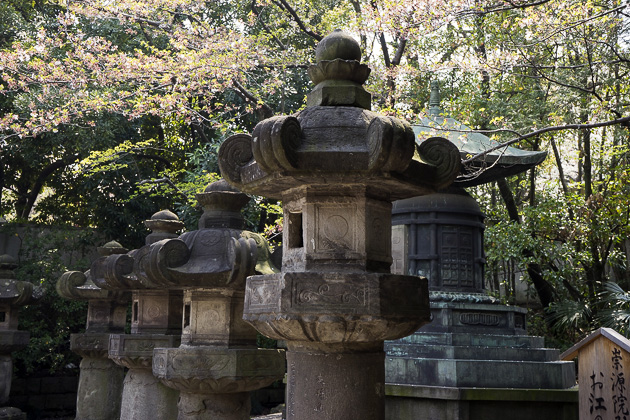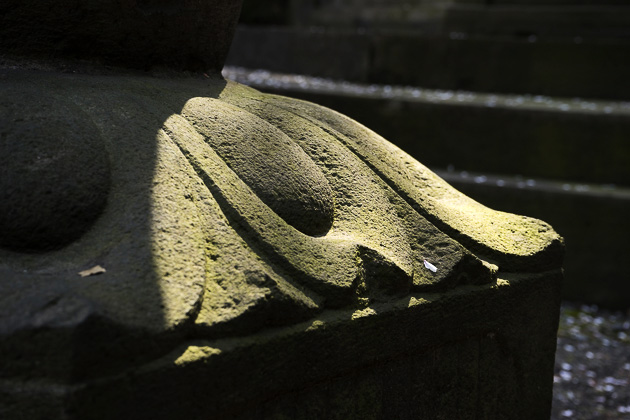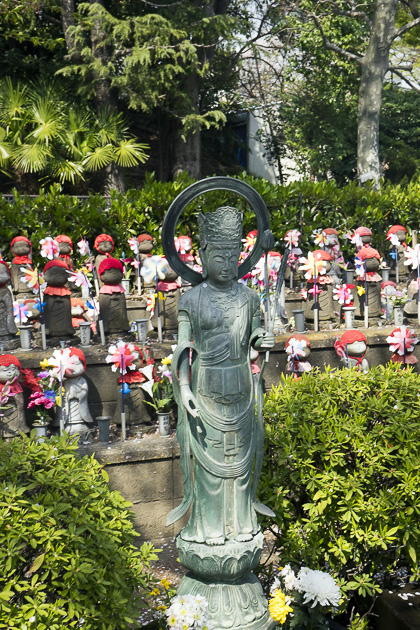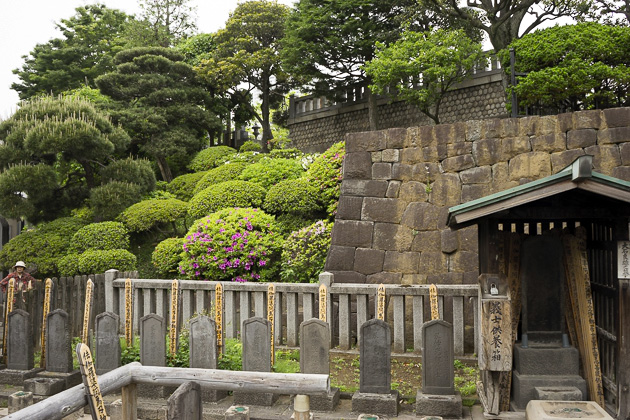Zojo-ji and the Shiba Garden
Today, it’s hidden in the shadow of the Tokyo Tower, but the temple of Zojo-ji was once among the grandest in Japan. This was the Tokugawa clan’s favored place of worship, and the resting place of many shoguns. We visited the temple on Buddha’s birthday and, afterwards, took time to check out the nearby Shiba Detached Palace Garden.

The fact that we were visiting the Zojo-ji on Buddha’s birthday was a coincidence. (Until Buddha accepts my friend request on Facebook, I can’t be expected to remember his birthday.) But we lucked out: April 8th is one of the few days in the year when the temple opens the doors to the Tokugawa Mausoleum, where six shoguns are buried. It’s always fun to enter a place that’s normally off-limits, so it hardly mattered that we couldn’t read the names on the tombstones.
When the Meiji Empire came into power, the Zojo-ji found itself in a precarious position, thanks to its importance to the hated Tokugawas. The new emperor began promoting Shinto over Buddhism, and forced the temple to relinquish over 90% of its land, dispersing thousands of the monks who lived there. In a brazen show of disrespect, the bones of the buried Tokugawa Shoguns were disinterred and moved to a tiny plot in the corner. Furthermore, the temple was targeted by newly-empowered Shinto hardliners, who set fire to many of its buildings.
But although the Zojo-ji has lost its former grandeur, it still manages to impress. The main hall, a 1972 re-construction of the original, is massive and minimalist, with a beautiful golden shrine in the center. Behind the hall, there’s a cemetery which has the Tokyo Tower for a backdrop. And to the side, in front of the Tokugawa Mausoleum, are hundreds of Jizo statues lined up in a row. Decorated with bonnets, flowers, toys and even winter coats, these are dedicated to unborn children.

After scarfing down a quick lunch of noodles from one of the stands which surround the temple, we walked down the street, past the World Trade Center, and into the Shiba Detached Palace Garden. Like the nearby Hama Detached Palace Garden, this was private land until the Meiji takeover and the fact that it’s been preserved in the middle of an area of such transformative growth is remarkable. After paying a small entrance fee, we walked along the park’s looping path, past an archery range, around a pond and over a couple hobbit-like hills.

The Shiba neighborhood of Tokyo has a lot to recommend it, and a carefully-planned day spent here can be rewarding. Atago Hill and the NHK Broadcast Museum in the morning. Then Tokyo Tower, after which you’ll have time to get to your lunch reservations at the tofu restaurant Tofuya-Ukai. After a tour of Zojo-ji and the Shiba Gardens, you’ll be tired, but perhaps you can manage a quick jaunt to the Takeshiba Pier to see the boats leaving for the Izu Islands. Finally, you can take in the sunset from the World Trade Center’s observation deck. That sounds to me like a perfect day in Tokyo.
Locations on our Map: Zojo-ji Temple | Shiba Detached Palace Garden
More Photos from the Zojo-Ji

























More Photos from the Shiba Gardens and the Takeshiba Pier




















Since they pay so much respect to the unborn children, what is their attitude towards abortions?